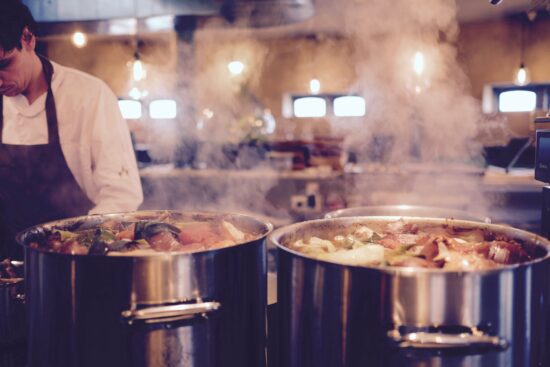Safety Risks When Cooling Hot Foods

As a server in the Texas food industry, it is crucial to understand how to prepare and serve food to patrons. From defrosting frozen foods, to how food is stored, one thing is very obvious, temperature matters when it comes to preventing bacteria growth on food.
One of the biggest safety risks in the industry that involves temperature is poor industry practices involving the cooling of hot foods. Earning your Texas food handlers certification gives you the information necessary to avoid the dangerous risks of improper food preparation. Until then, here are some tips from the professionals at Certified on The Fly.
How Does Temperature Impact Food?
Temperature plays a humongous role in bacteria growth on foods that are left in uncontrolled environments. The temperature range of 41 degrees to 135 degrees is considered the “danger zone.” This is the temperature range in which bacteria growth happens the fastest.
Food that is left out hours on end at these temperatures runs the risk of doubling their bacteria every 10-20 minutes. Sadly, even cooling foods improperly leads to bacteria and other risks.
Common Mistakes Made When Cooling Foods
Sometimes when cooking a food that is going to be stored, people tend to place piping hot food directly into the cooler for safe keeping. Unfortunately, this practice in itself is not safe. When you place hot food in a refrigerator or other cooling unit, the temperature of the hot food can actually increase the temperature inside the refrigerator. This can result in all the food inside the refrigerator reaching temperatures that are unsafe.
Another common mistake that people practice is just leaving food out. A good example of this would be a party setting. If your food has been out longer than two hours cooling, your bacteria level is most likely fairly high.
What is the Risk?
The biggest risk of improper cooling practices is simply foodborne illness. In fact, poor cooling has been one of the leading causes of restaurant illness outbreaks in recent years. According to the CDC, many restaurants that have been the source of foodborne illness were not practicing recommended cooling procedures.
Certified Practices for Cooling Hot Food
Your hot food needs to avoid the “danger zone” by cooling off quickly. Fortunately, there are some very simple ways to follow food temperature safety.
The size of your food helps to determine how long it will take to cool off. Start the cooling process faster by reducing the mass of your food and dividing it up into separate containers.
Another useful method is to fill a clean kitchen sink with cold water and ice. Then place your food containers into the ice water, ensuring that the water does not mix with your food itself. During this process stirring the contents also helps the food cool quickly and safely.
One extra tip on cooling food is to not attempt to cool your food outdoors. Not only can do you have zero control over temperature, but you are exposing your food to animals and pathogens that could prove very disrupting to your customers’ stomachs.
Become Certified and Consumer-Safe with Certified On The Fly
Remember, time and temperature are everything in the food industry. Get your Food Handlers Card and learn some of the most efficient ways to cool your food and more. Certified On The Fly provides an affordable online course that earns you a certification from the comfort of your own home. Enroll today to find out more ways to educate yourself and your coworkers.
Back to Blog